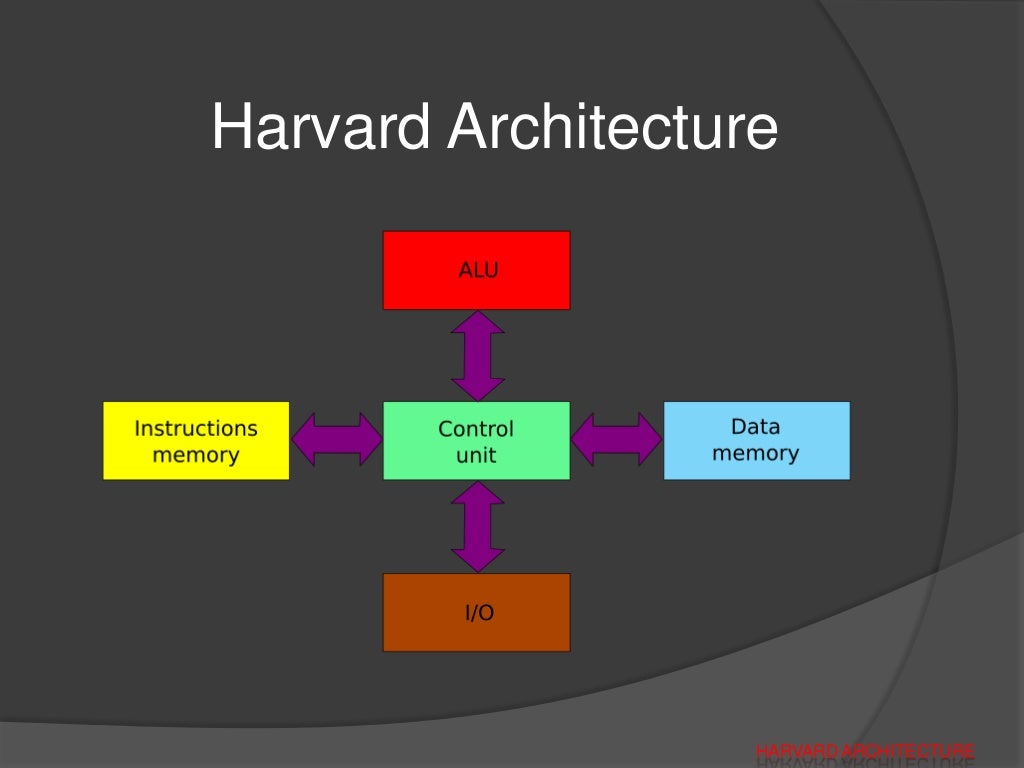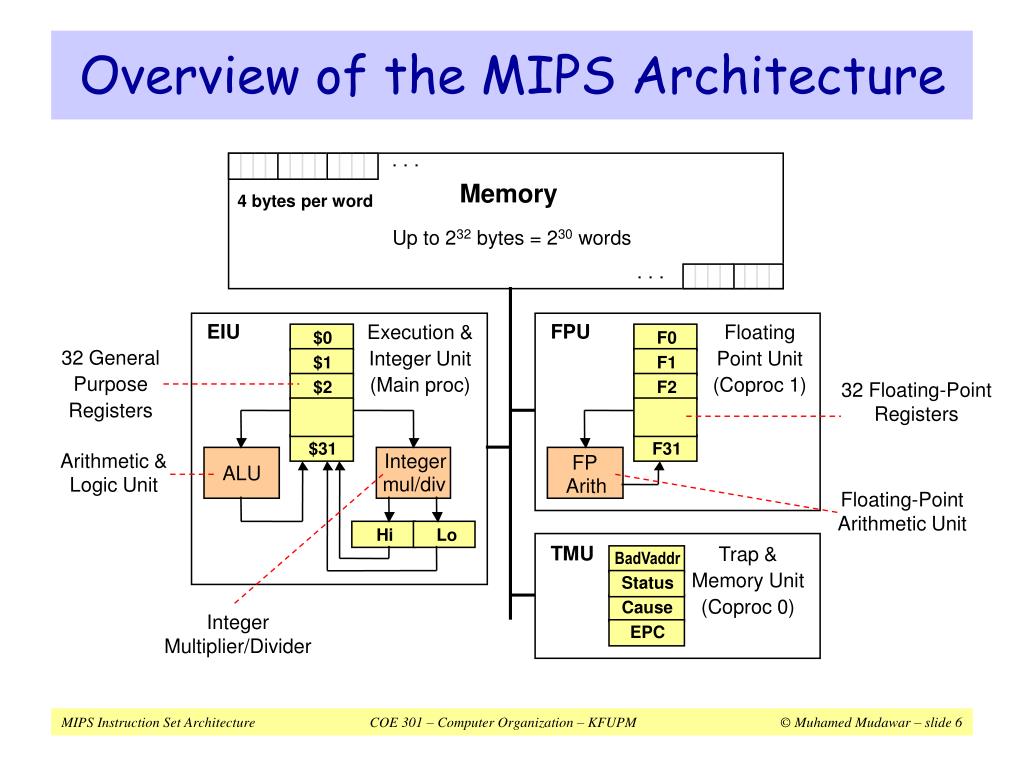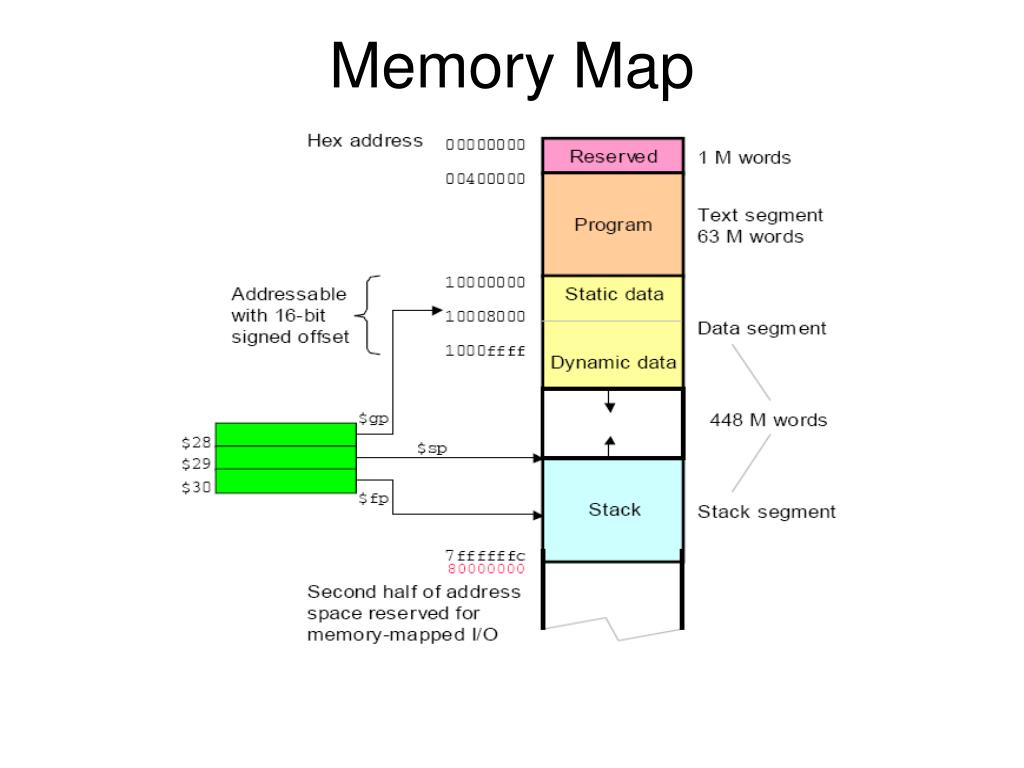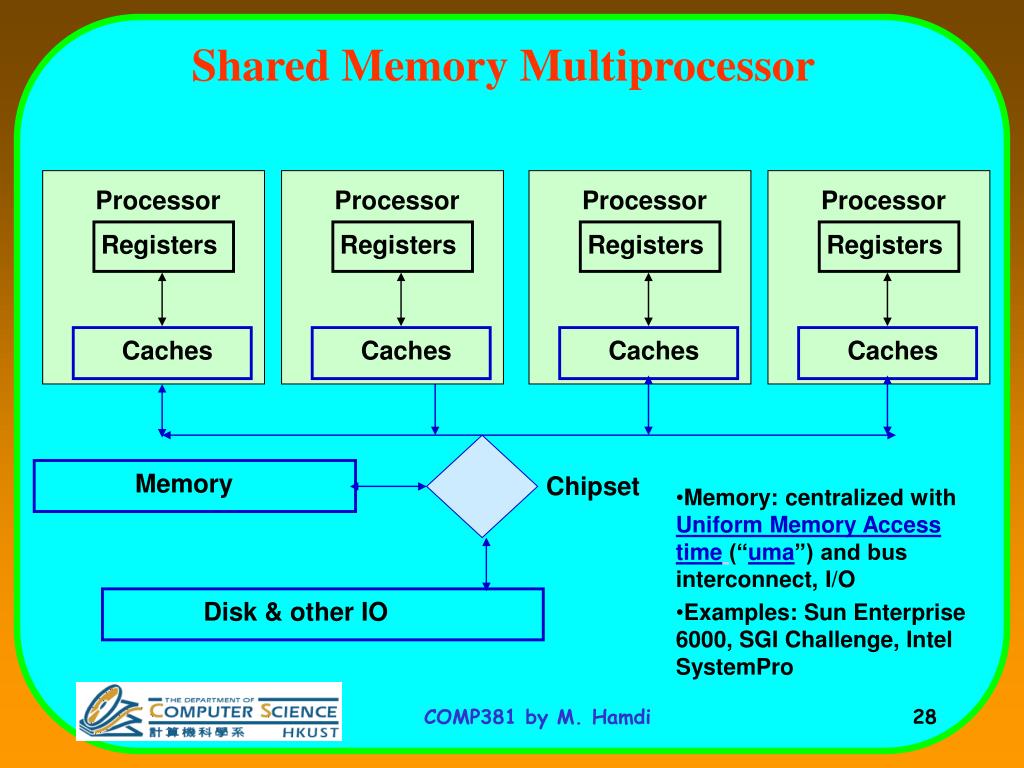Group 6: MIPS Architecture Topic 1: Modified Harvard Architecture In MIPS Processors: Shared Memory Presentation
| Introduction to Modified Harvard Architecture in MIPS Processors: Shared Memory | ||
|---|---|---|
| The Modified Harvard Architecture is a variation of the traditional Harvard Architecture. MIPS processors use the Modified Harvard Architecture to improve performance. In the Modified Harvard Architecture, both instructions and data are stored in the main memory. | ||
| 1 | ||
| Overview of the Modified Harvard Architecture | ||
|---|---|---|
| The Modified Harvard Architecture separates the instruction and data memory spaces. It allows simultaneous access to both instruction and data memory. This architecture enhances performance by reducing memory access conflicts. | ||
| 2 | ||
| Shared Memory in the Modified Harvard Architecture | ||
|---|---|---|
| Shared memory is a key feature of the Modified Harvard Architecture. It allows instructions and data to be stored in the same memory space. Shared memory eliminates the need for separate instruction and data caches. | ||
| 3 | ||
| Advantages of Shared Memory in the Modified Harvard Architecture | ||
|---|---|---|
| Simplifies the memory hierarchy by reducing complexity. Allows for efficient use of memory resources. Enables faster access to both instructions and data. | ||
| 4 | ||
| Challenges of Shared Memory in the Modified Harvard Architecture | ||
|---|---|---|
| Shared memory can lead to memory access conflicts. Careful synchronization is required to avoid data corruption. Efficient cache coherence protocols are necessary for proper functioning. | ||
| 5 | ||
| Implementation of Shared Memory in MIPS Processors | ||
|---|---|---|
| MIPS processors implement shared memory using a unified memory architecture. The memory is divided into separate instruction and data caches. Cache coherence protocols ensure consistency between instruction and data caches. | ||
| 6 | ||
| Performance Impact of Shared Memory in MIPS Processors | ||
|---|---|---|
| Shared memory reduces memory access conflicts and improves performance. Simultaneous access to instructions and data reduces memory latency. Efficient cache coherence protocols minimize data corruption and enhance performance. | ||
| 7 | ||
| Applications of Shared Memory in MIPS Processors | ||
|---|---|---|
| Shared memory is widely used in multiprocessor systems. It enables efficient communication and data sharing between processors. Shared memory is crucial for parallel computing and multitasking applications. | ||
| 8 | ||
| Conclusion | ||
|---|---|---|
| The Modified Harvard Architecture with shared memory is an important feature of MIPS processors. It enhances performance by providing simultaneous access to instructions and data. Proper implementation and synchronization are crucial for efficient operation. | ||
| 9 | ||
| References (download PPTX file for details) | ||
|---|---|---|
| [Insert references here]... Your second bullet... Your third bullet... |  | |
| 10 | ||




